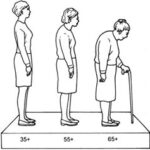 Researchers at Tung Wah Eastern Hospital, in Hong Kong, China, reviewed the evidence for CAM in the context of the overall treatment plan.
Researchers at Tung Wah Eastern Hospital, in Hong Kong, China, reviewed the evidence for CAM in the context of the overall treatment plan.
Here’s what we know.
- Nutrition and protein intake
- Adequate nutrition is vital for bone repair and to prevent further falls, but malnutrition is common in older people hospitalized for hip fracture.
- The effect on fracture prevention is controversial, but a balanced diet with adequate protein intake may prevent weight loss, muscle wasting, and sarcopenia (loss of skeletal muscle mass and strength associated with aging) — important risk factors for frailty and falls.
- Calcium and vitamin D supplementation
- Vitamin D insufficiency is common in elderly hip fracture patients.
- Vitamin D is the key to intestinal absorption of calcium.
- Hence, ensuring calcium and vitamin D sufficiency is a pivotal part of the fracture prevention.
- The exact calcium requirement is debatable, although a total daily calcium intake (diet plus supplementation) of approximately 1,000 mg/day is likely to be sufficient and safe.
- Vitamin D metabolites, including 1-alpha cholecalciferol (alphacalcidol) and 1,25-dihydroxycholecalciferol (calcitriol), are used in some Asian countries with positive results on hip fracture prevention, although the studies are small and the ability to improve bone mineral density is controversial.
- Preventing frailty and falls
- Assessment of home and environmental safety is often neglected and should be emphasized. In individuals who require assistance with daily activities, care-providers should be educated on the correct technique in the transfer of elderly to avoid fall and fall-related injuries.
The bottom line?
The authors concluded, “Patients with hip fractures are at high risk of future fracture, and proper management is vital to reduce the associated impact on quality of life and mortality, and to prevent the risk of future fractures.”
In addition, “Non-pharmacological treatment, including adequate nutrition, calcium, and vitamin D intake together with exercise and rehabilitation programs form a vital part of the treatment regimen in these frail elderly patients.”
3/9/11 19:46 JR